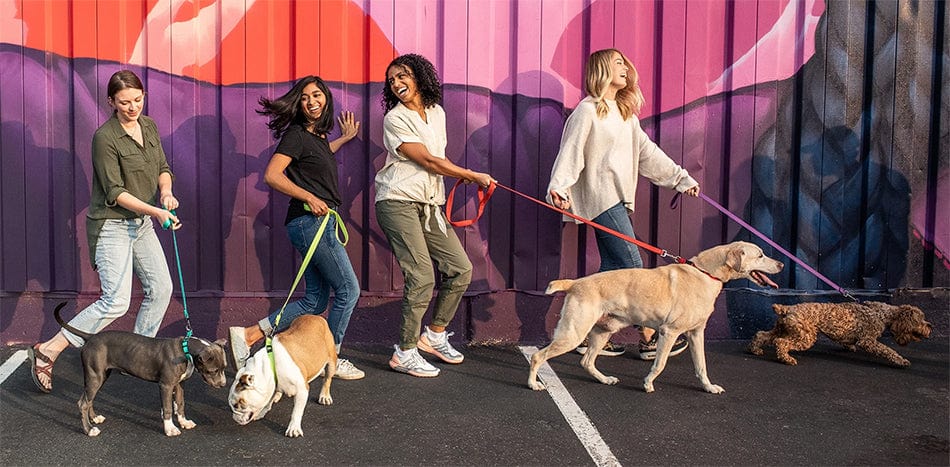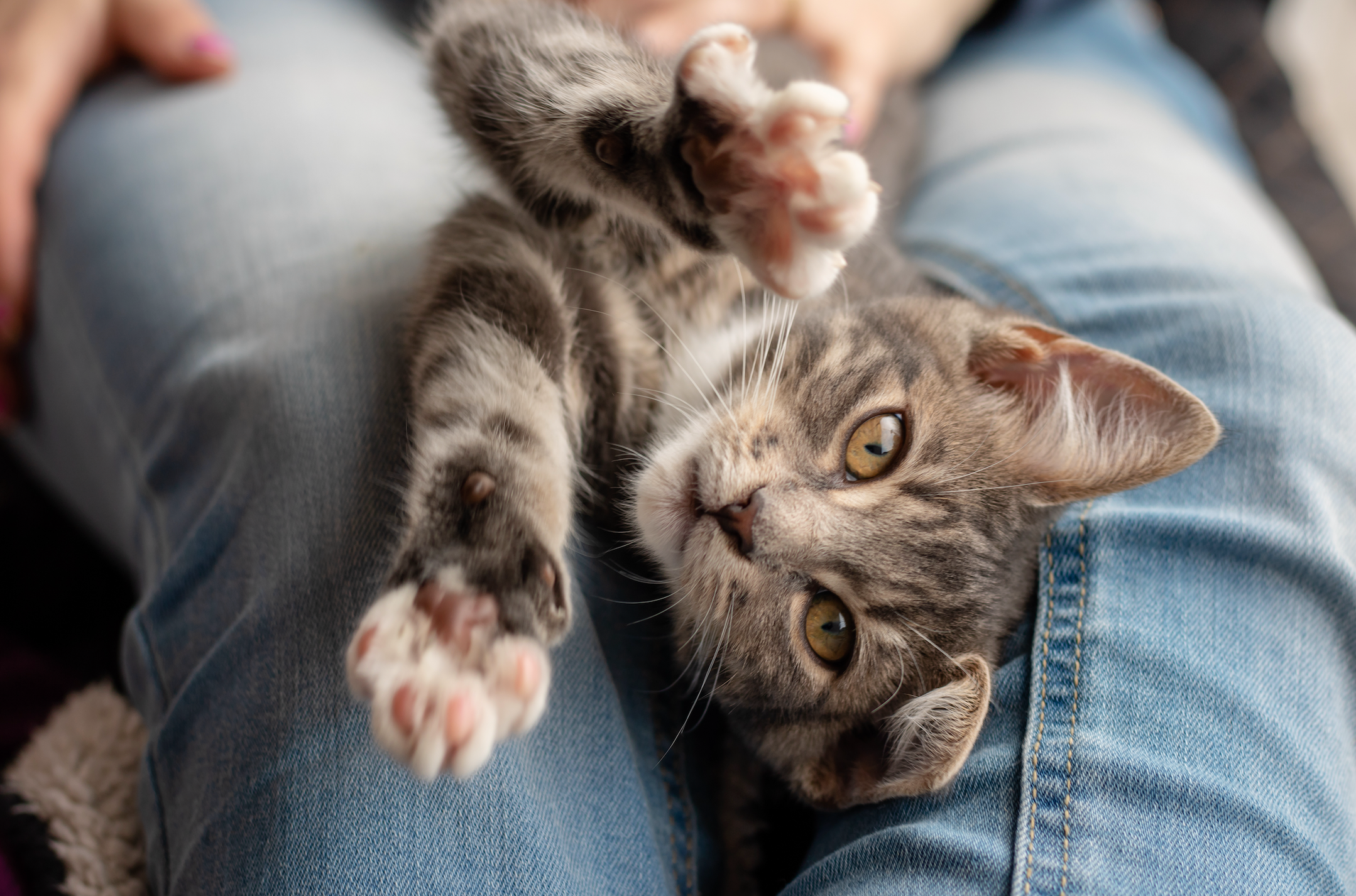Your cart is empty. Let's fix that!


How can you help your new cat feel like your home is their home too? This shopping list includes everything from toys to lint rollers to help get things started on the right foot with your new BFF.
Whether you’re submitting an adoption application to your local animal shelter or a stray cat in your neighborhood adopted YOU, bringing home a new cat is exciting! Any new relationship has a ‘getting to know you’ phase, so you might have your hands full trying to win over your new cat once they’re home.
Make the process easier by buying everything you need for your new cat ASAP so you’re not making emergency trips for a new litter box after they decide your potted plant makes a better potty! Don’t worry about going overboard right at the start, though.
All it takes are a few basics to get your cat settled in, and they don’t need to be expensive to make your cat happy! Plus, you’ll have plenty of time to lavish them with fancy foods, motorized toys, and impressive cat furniture once you learn what they actually like. (Besides, there’s always a chance they’ll like the box their new gift came in better than the gift itself.)
Here’s what we recommend picking up before you bring your new feline friend home:
Even if you’re planning on having an indoor cat, you should always make sure that your pet has identification on them so they can find their way home if you ever get separated. The longest-lasting form of ID is a microchip, which can be inserted quickly and easily at your vet’s office and will last for your cat’s whole life. Most animal shelters and veterinarians know to scan for microchips on lost animals and can help reunite you and your pet!
You may also consider getting a cat collar with an ID tag. Not all people believe they are necessary for fully indoor cats, but it’s a good idea to get one for escape artist cats or travel companion cats. If you do decide to get a collar, make sure it’s a breakaway collar so that your cat won’t hurt themselves if the collar gets caught on something.
The old-fashioned cardboard carriers that animal shelters give out will work to bring your new kitty home, but you should invest in a good cat carrier for their future travels! Carriers are essential for car safety, trips to the veterinarian, and airplane or road trips.
Choose a carrier that’s right for your needs. Sturdy plastic carriers work well to keep your pet both secure and protected, and you can easily repurpose a small dog crate or carrier for the job. If air travel might be in your future, consider an airline-approved cloth carrier that will fit under an airplane seat. Whatever style you choose, make sure it has a solid, supportive base so your cat feels secure.
Every cat needs food and water bowls! You can spring for a cute matching set from the pet store or keep things simple with bowls you already have around the house.
Whatever your preference, opt for ceramic, glass, or metal bowls. Plastic can scratch and harbor bacteria which can cause itchy feline acne on your cat’s chin. Also, consider a bowl that’s relatively wide and flat so your cat doesn’t have to press their sensitive whiskers on the edges of the bowl.
There are a lot of brands and formulas of cat food out there! While it may feel overwhelming at first, a little research will help you find the perfect food for your new cat. Look for a vet-recommended formula that puts real meat as the first ingredient—no byproducts, grains, or fillers. You should also make sure that it matches your cat’s stage of life.
Kittens need many more calories than adult cats to feed their growing bodies until your vet tells you they’re reached their adult size (usually at around a year old). Feed them a specialized kitten food or follow the kitten feeding guidelines on a cat food that’s approved for all life stages. Senior cats and pregnant or nursing cats also have particular nutritional requirements, so be sure to read your food labels and consult with your veterinarian on their diet!
No matter the age of your cat, you’ll have to decide whether you want to feed them dry cat food or wet cat food. Wet cat food is closer to a cat’s natural diet (and often easier for kittens to transition to after milk) and provides much more moisture than dry food, but it can be cost prohibitive and harder to store. Dry cat food is more affordable, longer lasting, and can be bought in bulk, making it an easy staple to keep in your pantry.
Both types of cat food can be perfectly good options to feed your cat as long as you’re getting high-quality, nutritionally-balanced formulas. Some cat owners choose to mix and match wet and dry food at different meals or mixed together in the same bowl.
Pro tip: ask the shelter what food they’ve been feeding your new cat and grab some from the pet store so you can gradually transition them to your new food of choice without offending their sensitive palate!
Choosing cat treats is more straightforward! We recommend grabbing a small variety of treats made with a couple of different proteins so you can see which ones your new cat favors. It’s always good to have small, low-calorie treats around for training and rewards. We also love hand feeding tube treats to increase the bond we have with our cats, which can be especially helpful in getting a shy or nervous cat to trust you.
Cats can be slow to acclimate to big changes, so it may just take time for them to learn to love it. Plus, you have years ahead of you to learn all their favorite flavors and serve up their perfect menu.
Cats love to snooze in the weirdest (and most in the way) places, but it’s always good to have a cozy bed that they know is just for them! Plus, having a dedicated spot for your cat to snuggle up will make it easier to clean up all that cat hair—especially if you get a cat bed that’s machine washable.
You can keep things classic with a soft, plush cat bed or spring for something a little fancier like a heated cat bed (perfect for sore joints but enjoyed by most cats) or a covered cat cave (perfect for shy cats who crave a safe hideaway). Whatever you choose, think about the placement of the bed so that your cat will get the most use out of it.
Cats typically like to be where the action is, so place their bed close to your favorite hangout spot in the house. They like to have a good view, so put the bed on an elevated surface like a shelf, windowsill, or couch to get them off of ground level. And if they find a firm favorite spot somewhere, try putting their bed there in a place you know they love.
The simple truth of owning cats is that they’re going to scratch—it’s instinct and they can’t fight it! Instead of getting upset when they scratch up the arms of your favorite velvet sofa, prevent problems before they start by redirecting that feline instinct to a dedicated cat scratcher or two.
Cat scratchers come in a variety of styles and price points, from affordable and effective cardboard cat scratchers to classic rope cat scratching posts to built-in scratchers on fancy cat towers or cat trees. You may find that your cat has preferences on what material they prefer to scratch, but you certainly don’t have to break the bank on a toy made to be shredded!
The key to getting your cat to use the scratcher instead of your belongings is to make it the most appealing option in the house, so consider getting a scratcher pre-infused with catnip or doing it yourself by rubbing catnip into its nooks and crannies. If all else fails and they’re still aiming their claws for your couch or walls, prop up a scratcher right over their favorite scratching spot to protect your stuff and teach them that the scratcher can be just as satisfying to dig their claws into.
Cats are hunters by nature, and that prey drive influences the toys they like to play with. Anything they can chase and carry around like a trophy of their hunt is a safe bet for your cat to enjoy!
With that in mind, there are a couple of classic cat favorites that have stood the test of time for most cats:
If you’re really looking to explore your cat’s play preferences, you can offer a wider selection of toys that are fun but can be more hit or miss depending on your cat’s personality. Laser pointers are a popular interactive option (and you can get robotic versions to do the job when you’re not around). Some cats enjoy larger stuffed toys, either to cuddle or wrestle with!
Most cats are fastidious about keeping themselves clean, but they’ll benefit from a little extra maintenance to help reduce their hairballs and stop your home from turning into a fur explosion! Long-haired cats and senior cats require special attention to keep their gorgeous fur feeling clean, soft, and tangle-free.
The grooming tools you should have on hand are:
With these supplies in your kit, long-haired and short-haired cats alike will be looking photo ready—and feel less stabby when they make biscuits on your lap.
Scooping poop is never a pleasant job, but you can make the cat litter box a much happier place for you and your cat by finding the right litter box and cat litter for you! You should look for a litter box that’s large enough for your cat to comfortably turn around in and has high sides to keep litter contained as your cat digs.
You can try fancier options like a covered litter box or automatic litter box, but some cats can find them unpleasant and we recommend having a safe bet available for your new cat to get comfortable with right away. Whatever you choose, a litter mat placed by the entrance to the litter box will help to trap excess litter and reduce cleanup.
When it comes to the litter itself, you have a lot of options beyond the classic clay litter your family cat used when you were growing up. There are cat litters made from wood, silica, and even soybeans, and you should do your research to find the right option for you based on dust levels, odor control, messiness, sustainability, and more. Find all the details in our guide to choosing the best cat litter for your cat!
If your cat has a type of litter they’re accustomed to using already and you want to swap, it’s recommended to get a small amount of that litter and gradually transition to your preferred variety. Changing their litter cold turkey might make them look for other places to do their business. And if your cat isn’t used to using a litter box at all yet, take a look at our guide to litter training your cat.
Even though cats have a reputation for being tidy, messes happen! Between shed hair, hairballs, and accidents, you should be prepared with these cleaning supplies at the ready:
With your litter box in place and catnip mouse at the ready, you’re ready to welcome your new cat home! With a little patience and TLC, you’ll have a new firm friend by your side for wild games of chase the string and afternoon cuddle sessions.